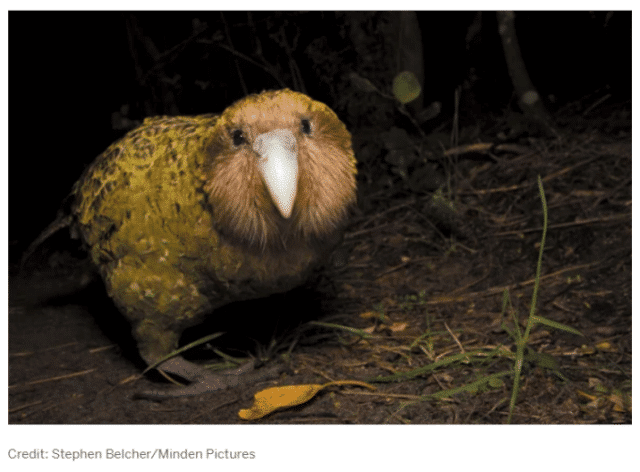All animals carry a plethora of bacteria, viruses, archaea and fungi, and their internal microbial ecosystems provide them with nutrients, immunity, and defense against pathogens.
Microbiome sequencing is becoming cheaper and more advanced from day to day. This means that microbiome sequencing of animals, even rare animals, which was once thought to be an extravagant expense, is becoming more and more common.
What’s the link between the microbiome and endangered animals?
Normally, microbiome sequencing of endangered animals under conservation provides crucial information for animal conservation and prevention of extinctions.
However, the microbiome sequencing of the world’s heaviest, flightless and critically endangered parrot of New Zealand resulted in an enigma for kākāpō conservation. The findings are detailed in an article from the Scientific American.
The kākāpō is a critically endangered parrot, and its total population of 250 is dispersed over five remote islands in New Zealand and is carefully and closely managed by New Zealand wildlife officials. Scientists hoped the kākāpō’s gut microbiome composition held clues that could help preserve this animal for future generations.
What does the research say?
To study the gut microbiome composition of the kākāpō, government staff and volunteers collected fecal samples from 67 birds in 2019, and then their DNA content was analyzed.
The findings of the 2019 study were puzzling. In most cases, a diverse gut microbiome is expected in a healthy animal, as the variety of microbes and their genes provide a plethora of health benefits. In the kākāpō gut microbiome, however, the scientists found almost entirely Escherichia coli. The proportion of E. coli was documented to reach levels as high as 99% in some adult kākāpō guts.
In their study from 2022, the same research group performed a longitudinal sequencing study of the kākāpō chick gut microbiome. Here, they saw that the E. coli dominance they observed in adults increases in the chicks as they grow. If such dominance was preceded by a loss of gut microbial diversity in the chicks, then the adult gut composition might have been worrying.
However, the scientific community suggests that such simplicity of the microbiome may be driven by the small population size of the animal, as well as its habitat fragmentation, which does not promote microbial diversity.
Summary
The obvious next question is what benefits E. coli provides for the kākāpō and what are its overall roles in the parrot’s health. The example of kākāpō clearly illustrates that our understanding of endangered animal microbiomes is still in its infancy, with still a lot to discover and understand.
Looking for leading microbiome sequencing services to further your research?
At CosmosID, we offer expert microbiome sequencing services and custom bioinformatics solutions that can help power your research. We believe our powerful proprietary analytics engine, combined with advanced machine learning techniques, provides the fastest and most accurate metagenomic analysis in the industry.


